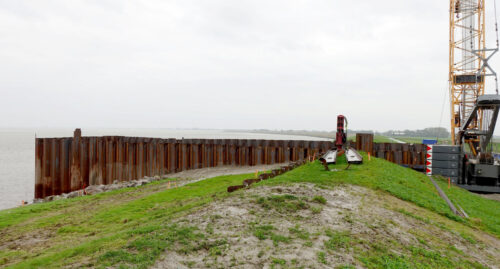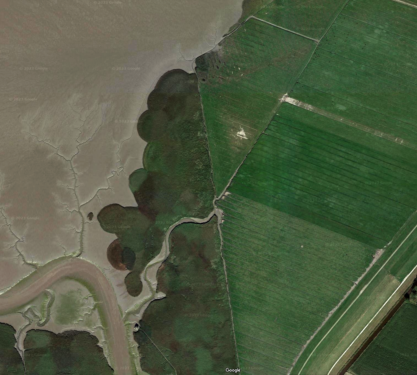Event
13.10.2024: Dubbele Dijk, Bierum, NL
‘Waker, Slaper, Dromer’ (Watcher, Sleeper, Dreamer) is a series of three walks named after the poetic names and functions of dike systems in the Netherlands. Here, the ‘watcher’ protects against the outside water first, and the inland ‘sleeper’ catches any breach. Behind this sleeper sometimes lies another ‘dreamer.’ These walks are organized by visual artist Marjolijn Dijkman as part of her WaterLANDS artist residency (2023-2026). She reflects on ecological restoration and depoldering in the context of the Ems-Dollard estuary and surrounding landscape in the North of the Netherlands.
During the first joint walk, ‘De Waker’ (The Watcher), together with artist Marjolijn Dijkman, botanical archeologist Mans Schepers and landscape philosopher Eric Brinckmann, we look at elements in the newly shaped Twin Dyke landscape and the broader context of the estuary and interpret it from the perspective of the watcher in a broad sense.
The ‘watcher’ separates the ‘controlled’ inland and ‘uncontrolled’ outer tidal landscape. In the coming years, the Double Dike will form a new ‘inner/outer space’ between the watcher and a new sleeper dike where sea water can flow in. After centuries of reclamation and the construction of ever-higher dikes, this is a moment when the sea is allowed back in. This is done in a controlled way with a tidal culvert, but it is part of a turning point in our relationship to the sea. How does this newly formed landscape affect our relationship with this environment and the uncontrolled estuary beyond the dikes? What can we learn from this new landscape, and how does it relate to the past of Groningen with mound communities that lived in the salt marshes?
Mans Schepers
During the outward walk on the dike, we dive into the past with botanical archaeologist Mans Schepers, a specialist in mound communities and the history of coastal landscapes. The waker dike at the Dubbele Dijk is built on remnants of the vanished wierde village of Watum. How did the mound dwellers live, and what can we learn from their way of living with the tides? What ways did they have to keep the water out and their environment safe? And what crops did they grow on and around the mounds, and could they be grown again today?
Eric Brinkmann
During the return walk with landscape philosopher Eric Brinckmann, we reflect on our relationship to the coastal landscape at the Double Dike. Brinckmann connects this newly formed landscape to historical themes and shows how people have related to natural and cultivated space over the centuries. How has our relationship with nature changed over time in the Netherlands? What does contemporary water management in coastal areas say about our current place within the natural world?
See for more information: www.wakerslaperdromer.nl (Dutch only)

